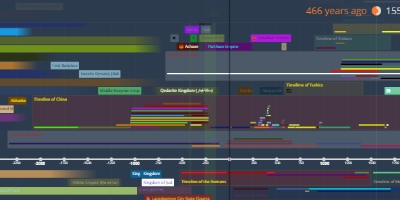Aztec Empire [Triple Alliance] (Ēxcān Tlahtōlōyān) (jan 1, 1428 – aug 13, 1521)
Description:
The Aztec Empire, or the Triple Alliance (Classical Nahuatl: Ēxcān Tlahtōlōyān, [ˈjéːʃkaːn̥ t͡ɬaʔtoːˈlóːjaːn̥]), was an alliance of three Nahua altepetl city-states: Mexico-Tenochtitlan, Tetzcoco, and Tlacopan. These three city-states ruled the area in and around the Valley of Mexico from 1428 until the combined forces of the Spanish conquistadores and their native allies under Hernán Cortés defeated them in 1521.The Triple Alliance was formed from the victorious factions of a civil war fought between the city of Azcapotzalco and its former tributary provinces. Despite the initial conception of the empire as an alliance of three self-governed city-states, Tenochtitlan quickly became dominant militarily. By the time the Spanish arrived in 1519, the lands of the Alliance were effectively ruled from Tenochtitlan, while the other partners in the alliance had taken subsidiary roles.
The alliance waged wars of conquest and expanded rapidly after its formation. At its height, the alliance controlled most of central Mexico as well as some more distant territories within Mesoamerica, such as the Xoconochco province, an Aztec exclave near the present-day Guatemalan border. Aztec rule has been described by scholars as "hegemonic" or "indirect". The Aztecs left rulers of conquered cities in power so long as they agreed to pay semi-annual tribute to the Alliance, as well as supply military forces when needed for the Aztec war efforts. In return, the imperial authority offered protection and political stability, and facilitated an integrated economic network of diverse lands and peoples who had significant local autonomy.
The state religion of the empire was polytheistic, worshiping a diverse pantheon that included dozens of deities. Many had officially recognized cults large enough so that the deity was represented in the central temple precinct of the capital Tenochtitlan. The imperial cult, specifically, was that of Huitzilopochtli, the distinctive warlike patron god of the Mexica. Peoples in conquered provinces were allowed to retain and freely continue their own religious traditions, so long as they added the imperial god Huitzilopochtli to their local pantheons.
Added to timeline:
Date:
jan 1, 1428
aug 13, 1521
~ 93 years
